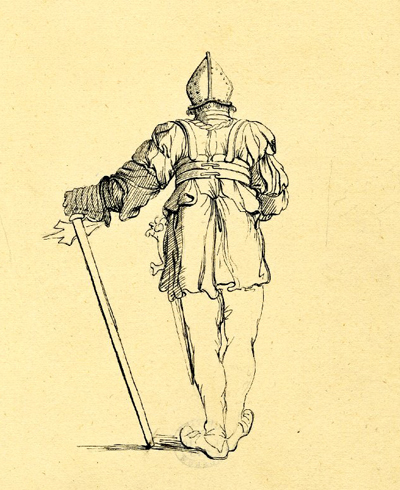[Prince of Wales]
From 1792 to 1802 Gillray produced at least ten portrait caricatures of subjects seen from behind. They include Back View of a Cape [1792], A Burgess of Warwick Lane [1795], A Dash up St. James's Street [1797], Half-Natural [1799], From Sir Wm Hamilton's Collection [1801], and this one of the Prince of Wales which apparently needed no title. It is a striking and virtually unprecedented display of Gillray's confidence in his powers as a portrait caricaturist.
![James Gillray. [Prince of Wales].
Trustees of the British Museum](../images/bm_prince-back.jpg)
© Trustees of the British Museum
There had certainly been single figures seen from behind in both high and low art. One thinks of figures by Ostade, Callot, and most masterfully by Watteau. Bunbury has a drawing of a French postilion seen from behind. And there is even a drawing by Mortimer based on one by Salvator Rosa that may have in fact served as the inspiration for this one of the Prince. But none of these was intended as a portrait of an identifiable person.

Drawing after Salvator Rosa [1770-79]
© Trustees of the British Museum
Although they are all seen from behind, each one of Gillray's portraits is unique, capturing the subtle differences of their subjects' personalities in the way they stand, the clothes they wear, and the tilt of their heads.
In the high art of Watteau and other "serious" artists, the back view of the subject suggests a certain mystery, something witheld from us that creates a meditative space between subject and viewer. In Gillray's prints, however, the back view typically exposes something about the subject that he did not intend to reveal. In The Prince Wales, Gillray captures the mess beneath the formality of the Prince's life with a single bit of untucked shirt.
Sources and Reading
- Commentary from the British Museum on [Prince of Wales]
- "George IV of the United Kingdom," Wikipedia
Comments & Corrections
NOTE: Comments and/or corrections are always appreciated. To make that easier, I have included a form below that you can use. I promise never to share any of the info provided without your express permission.